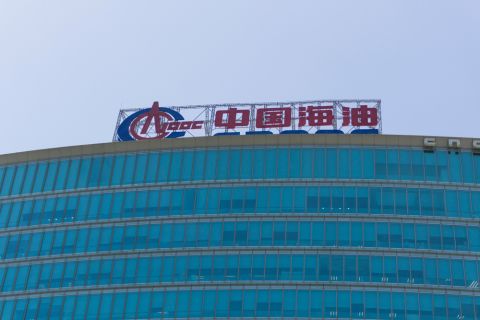 |
| By 1941, the Electrolog was recording information in wells that were almost 3 miles (4.8 km) deep. (Images courtesy of Baker Atlas) |
The Lane-Wells Co. was founded in 1932 on the success of the first operational bullet perforator. Recognizing the need to offer additional oilfield services, Lane-Wells chose to produce the Electrolog — an improved and refined tool for determining the electrical characteristics of formations surrounding an uncased borehole. This effort culminated in a novel and technologically advanced instrument first available in California in 1938 and in other areas of the country a few years later.
Lane-Wells engineers knew that sedimentary rocks had widely different electrical characteristics. The electrical characteristics which were the most useful were the natural potential occurring throughout the borehole and the resistivity of the formation at various lateral distances from the borehole.
The new Electrolog tool provided information on natural potential and resistivity while the instrument assembly was lowered into the hole and raised out on a multiconductor cable.
The resultant Electrolog multicurve record was a combination of four separate measurements made during a single run in the well:
• Curve No. 1 – Natural Potential;
• Curve No. 2 – Shallow Penetration Resistivity;
• Curve No. 3 – Deep Penetration Resistivity; and
• Curve No. 4 – Extra-Deep Penetration Resistivity.
After analysis and interpretation, this composite record yielded valuable information regarding the depth, thickness, nature, physical characteristics, and fluid content of the strata.
Truck, car for field use
Electrolog field equipment was usually carried in two mobile units, a hoist truck and an instrument car. Lane-Wells had a few combination units comprising a hoist truck and an instrument car on one vehicle chassis in areas where such equipment suited local conditions.
The hoist truck carried the depth and weight indicators, the cable speed indicator, electrical power generator, intercommunication amplifier, indicator cables, and other accessories, including the sheave.
The hoist truck also carried 8,000 to 15,000 ft (2,440 to 4,575 m) of the five-conductor cable. Lane-Well engineers designed the cable to sustain the logging loads yet maintain high electrical insulation resistance and conductor resistance under tremendous hydrostatic pressures.
The instrument car was equipped with a darkroom which contained the photo-recorder for making the log. Conductor cables connected this apparatus to the hoist truck and included a two-way communicating system so the hoist operator and recording operator could be in close contact at all times. The instrument car also carried the Electrolog control panel, film-developing equipment, an electrical generator, a field printer, mud-testing equipment, and other accessories.
High-tech photo-recorder
The photo-recorder converted the electrical signals from the Electrolog into curve images on photographic film. Delicate galvanometers inside the photo-recorder directed a light beam on sensitized film to record the signals. After exposure, the film was processed in the truck. If prints were desired, the field printer was used for making copies of logs on paper.
Additional research led to galvanometers capable of remarkably high-speed response with extreme accuracy. By 1940, new galvanometers were incorporated into Electrolog photo-recorders to provide recording speeds up to 300 ft (90 m) per minute.
Another novel feature of the Electrolog equipment was the photo-recorder film. Previously, photographic film had been a problem to process and handle in the field.
Ordinary, commercially available film was subject to severe staining and streaking. It had to be processed under exact temperature conditions and with a minimum of handling to prevent gouging its soft emulsion.
To meet the field conditions, research engineers at Eastman Kodak Co. developed a new film with a physically pre-hardened emulsion. Known as survey recording film, this material was capable of being hand-processed at temperatures in excess of 100ºF (38ºC). The emulsion did not stain, and it dried quickly. Survey recording film permitted
Electrolog customers to have a field print within a few minutes after the run was finished and assured a long printing and storage life for Electrolog negatives.
High-quality equipment
The sheave over which the five-conductor cable passed was precision-ground and designed to fit the cable. Every amount of cable travel over the sheave was transformed by a Selsyn motor into electrical signals which it transmitted through cables to the hoist truck odometer and to a Selsyn motor on the film drive in the photo-recorder. Thus, the electrode depth was known from the amount of cable traveling over the sheave which, in turn, moved the camera film in direct relation to the depth.
The Lane-Wells weight indicator accurately revealed when the Electrolog touched and left the bottom by the change in weight. Field experience revealed that the weight indicator was so sensitive it could accurately locate the fluid level in the well.
A cable speed indicator was used in conjunction with the weight indicator to carefully control the speed of the cable, thus maintaining accurate depth measurement throughout the travel in the hole.
After attaching the Electrolog assembly to the cable, field crews then attached special flags to the cable at accurately measured distances. These were used to check the calibrated sheave measurements over which the cable passed as it went into and came out of the well.
Depth measurements were important, for electrical analysis of subsurface formation was worthless without correct depths. Lane-Wells personnel checked the cables before installation on the hoist reel, then carefully installed them. Further checking and rechecking of the cables occurred at regular intervals to validate their condition.
Applications
The Electrolog was particularly valuable for subsurface correlation. Individual response patterns by which key horizons were recognized and identified for correlation were unusually clear-cut and well-defined.
By January 1941, the Electrolog was recording information in wells that were almost 3 miles (4.8 km) deep. Lane-Wells had also developed procedures to use the tool in highly deviated wells.
Through the years, the Electrolog provided valuable information on wells and assisted in the discovery of oil-bearing strata. Through a series of mergers and acquisitions, the Lane-Wells Co. eventually became Baker Atlas.
Recommended Reading
CNOOC Makes 100 MMton Oilfield Discovery in Bohai Sea
2024-03-18 - CNOOC said the Qinhuangdao 27-3 oilfield has been tested to produce approximately 742 bbl/d of oil from a single well.
TPH: Lower 48 to Shed Rigs Through 3Q Before Gas Plays Rebound
2024-03-13 - TPH&Co. analysis shows the Permian Basin will lose rigs near term, but as activity in gassy plays ticks up later this year, the Permian may be headed towards muted activity into 2025.
Proven Volumes at Aramco’s Jafurah Field Jump on New Booking Approach
2024-02-27 - Aramco’s addition of 15 Tcf of gas and 2 Bbbl of condensate brings Jafurah’s proven reserves up to 229 Tcf of gas and 75 Bbbl of condensate.
Well Logging Could Get a Makeover
2024-02-27 - Aramco’s KASHF robot, expected to deploy in 2025, will be able to operate in both vertical and horizontal segments of wellbores.
Shell Brings Deepwater Rydberg Subsea Tieback Onstream
2024-02-23 - The two-well Gulf of Mexico development will send 16,000 boe/d at peak rates to the Appomattox production semisubmersible.





